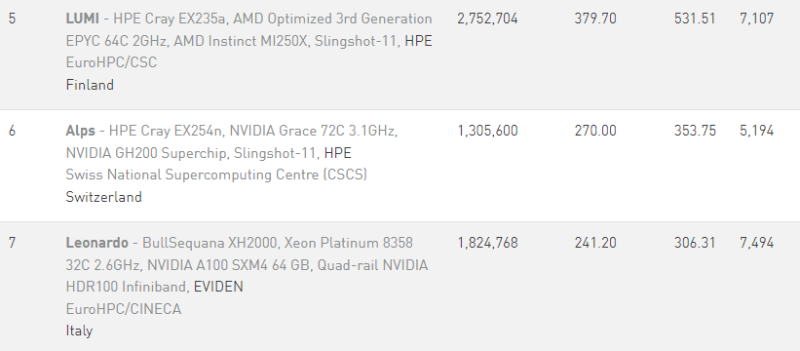The Swiss National Supercomputing Centre (CSCS) has officially unveiled Alps, an HPE-based supercomputer that ranks among the most powerful in the world.
The supercomputer, developed to power AI and high-intensity computing workloads, was officially showcased during an event at CSCS site in Lugano, with Swiss federal councillor Guy Parmelin in attendance.
Subscribe today for free
The supercomputer is based on HPE’s Cray EX platform and houses 10,752 Nvidia Grace Hopper Superchips.
Alps is geographically distributed across several sites, including the École Polytechnique Fédérale de Lausanne, the Paul Scherrer Institute (PSI) in Villingen, and the European Centre for Medium-Range Weather Forecasts in Bologna, in addition to the CSCS.
Installation began in January 2024, with its inaugural appearance on the Top500 list in June saw it achieve a sixth-place spot among the most powerful supercomputers in the world.
Alps was the only new entrant in the top 10 and was the second-highest-ranking European supercomputer, ahead of Italy’s Leanardo but behind Finland's LUMI.

The supercomputer isn’t finished though — once fully complete, the team behind it suggest Alps will have a maximum performance of half an exaflop — the equivalent of 500 million billion floating point operations (flops) per second.
At the event, the team behind the supercomputer said the status of Alps’ final expansion should be expected in November.
Alps is designed to power AI workloads, with the supercomputer set to support scientific research on AI transparency, reliability, and sustainability.
“Alps makes it possible to train complex AI models for important applications, for example, in medicine and climate research," says Andreas Krause, head of the AI Centre at ETH Zurich.
"With its cloud-native architecture, we can create versatile software-defined clusters (vClusters) tailored to the specific needs of user communities, ensuring the maintenance of the necessary confidentiality," said Thomas Schulthess, director of the CSCS.
Organisations already leveraging the Alps supercomputer include the Swiss Office of Meteorology and Climatology, MeteoSuisse, which switched to a weather prediction model with a much higher resolution that better reflects the complex topography of Switzerland.
RELATED STORIES
Oracle unveils ‘Zettascale’ cloud cluster powered by Nvidia Blackwell GPUs
Digital Realty selected to house Nvidia-powered AI supercomputer
Equinix launches managed service for Nvidia DGX AI supercomputing






